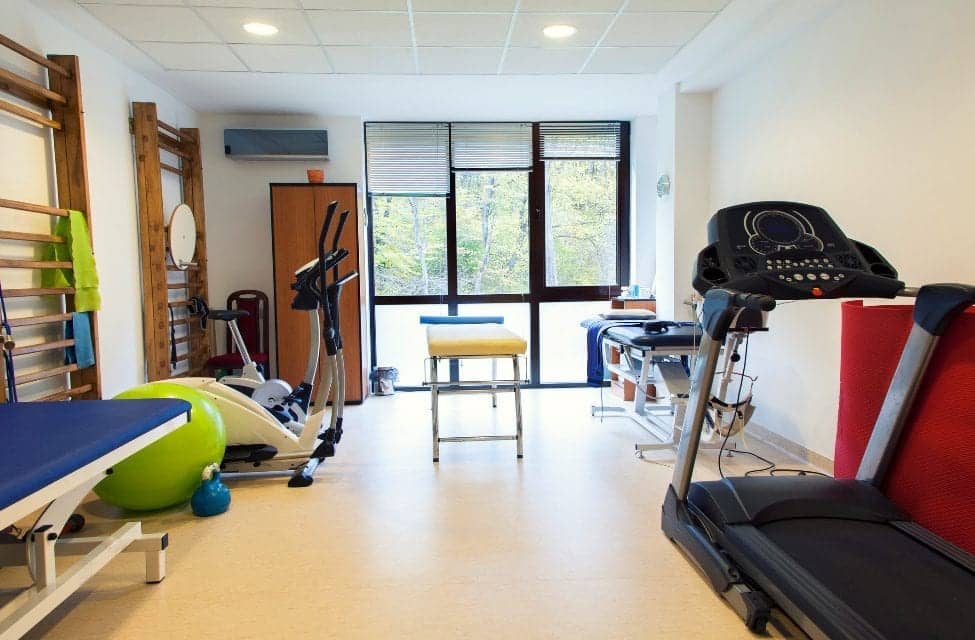NEW YORK (Reuters) – Your job does not have to be physically demanding to literally be a pain in the neck, or knee, or lower back.
Musculoskeletal conditions are among the top expenses for employee healthcare benefits, accounting for about a third of all worker injury and illness cases, according to the Occupational Safety and Health Administration (OSHA).
With healthcare costs projected to rise 4.9% in 2020, according to Willis Towers Watson, many large companies are ready to try something new. They plan to spend more upfront to try to prevent higher costs later on. For conditions like chronic back pain, that means trying to prevent injuries or treat them with innovative physical therapy to avoid surgery and potentially, opioid additions.
Prevention First
Some companies take a traditional proactive approach, like Rosen Hotels & Resorts, an Orlando-based chain, which has morning stretches for hotel staff, a free gym, plus a full-scale primary care health clinic with a physical therapist and chiropractor.
“Our cost per individual is half what the cost is nationwide,” said Harris Rosen, founder and chief executive. “We know, because we have lived through it, that if you focus on wellness and health, your healthcare costs decline.”
Other companies are trying to “appify” their care delivery. Brakebush Brothers Inc, a chicken processor headquartered in Wisconsin, turned to a third-party provider, Solveglobal, to crunch frequent worker surveys about their pains down to a line level on a specific shift, according to Matt VanderKooi, chief operating officer at Solveglobal.
One time they solved a rash of low back pain problems by figuring out that workers were reaching too much at a specific spot. Another time they could find no common source for random physical complaints from workers on a shift, but were able to identify that the problems were caused by work stress from a new supervisor.
Savings: $1 million this past year, said VanderKooi.
Post Holdings Inc. is using the service Hinge Health, which gives participants a tablet pre-loaded with exercises specific to their condition. So far 15% of the 1,200 employees eligible for the pilot are participating, out of about 8,000 on the U.S. medical plan, said Karen Little, vice president of payroll and benefits for Post.
Cost savings are not apparent yet, but Little said musculoskeletal disorders were running about 15% of Post’s total healthcare costs.
Hinge Health fees are based on a multiple of the projected savings and come with a money-back guarantee.
“Employers like a simple story. We’re avoiding surgeries and that’s where savings are coming from,” said chief executive officer Gabriel Mecklenburg. “We’ve never had to pay back a dime.”
Diversionary Tactics
Typically, people in pain go to a doctor. These new, voluntary worker benefits depend on promotions and word-of-mouth to get employees interested.
Physera clients receive email and postcards about medical services. The company also hosts pop-up clinics, said Dan Rubinstein, chief executive officer.
Since launching fully in 2019, the free version of the Physera app has 25,000-plus users, along with 1,000 participants in the full corporate program.
Physera measures success based on actions and improvement. Users are asked what steps they are likely to take – like getting an MRI. Out of 100 patients, a handful consider surgery and ultimately decide they do not need it.
“Early physical therapy intervention results in a 30-40% reduction in spending,” said Rubinstein.
For those suffering from painful disorders, any solution seems better than surgery and opioid prescriptions.
“I’ve been there on lower back pain,” said David Chase, author of “The Opioid Wake-up Call” and co-founder of Health Rosetta. “And we completely botch it. At some level, plan design can make a difference.”
For Jenna Kreitinger, a 27-year-old veterinary technician from Mesa, Arizona, the difference has been nothing short of life-changing. After she used Hinge Health consistently, her chronic spinal pain dissipated after years of trying many other solutions.
“Physical therapy was costly, and it was hard to find the time,” said Kreitinger, who now has a baby and is back to work full-time. “Just those small changes I made, it has helped me so much.”
[Source: Reuters]





